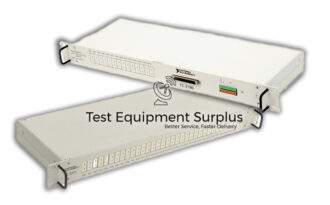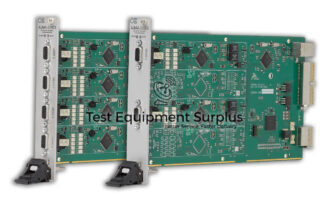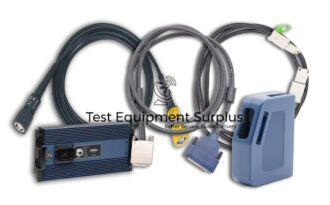Description
The PXIe-5644R is a powerful vector signal transceiver with a part number of 782376-01, 150818E-02L. This device boasts a significant bandwidth of 80 MHz and operates across a frequency range from 65 MHz to 6 GHz, making it versatile for a wide range of applications.
The initial adjustment accuracy is rated at ±200 × 109, with an aging factor of ±1 × 10-6 per year, ensuring reliable performance over time. It features an amplitude range from the average noise level up to +30 dBm, and a RF reference level resolution of ≥60 dB in 1 dB nominal steps.
The device offers an impressive timing resolution of less than 1 Hz and utilizes SMA (female) connectors. With an input impedance of 50 Ω nominal, it is designed for precision and compatibility. Speaking of compatibility, it supports a range of software including NI-RFmx, NI-RFSA, NI-RFSG, NI LabVIEW, and the NI LabVIEW FPGA Module, offering flexibility in how it can be integrated and used in various systems.
Additionally, the PXIe-5644R features a VHDCI digital I/O connector, with an absolute maximum input range for digital I/O of -0.5 V to 4.5 V, catering to a broad spectrum of digital interfacing requirements. This device is designed to meet the needs of demanding applications that require high accuracy, wide bandwidth, and extensive frequency coverage.
| Specification | Detail |
|---|---|
| Part Number | 782376-01, 150818E-02L |
| Model | PXIe-5644R |
| Bandwidth | 80 MHz |
| Frequency Range | 65 MHz to 6 GHz |
| Initial Adjustment Accuracy | ±200 × 109 |
| Aging Factor | ±1 × 10-6 per year |
| Amplitude Range | Average noise level to +30 dBm |
| RF Reference Level Resolution/Range | ≥60 dB in 1 dB nominal steps |
| Timing Resolution | <1 Hz |
| Connector Type | SMA (female) |
| Input Impedance | 50 Ω nominal |
| Software Compatibility | NI-RFmx, NI-RFSA, NI-RFSG, NI LabVIEW, NI LabVIEW FPGA Module |
| Digital I/O Connector | VHDCI |
| Absolute Maximum Input Range (Digital I/O) | -0.5 V to 4.5 V |
| N
Question 1: What is the bandwidth of the PXIe-5644R? Question 2: What frequency range does the PXIe-5644R cover? Question 3: What is the aging factor of the PXIe-5644R? Question 4: What type of connectors does the PXIe-5644R use? Question 5: What software does the PXIe-5644R support? |





